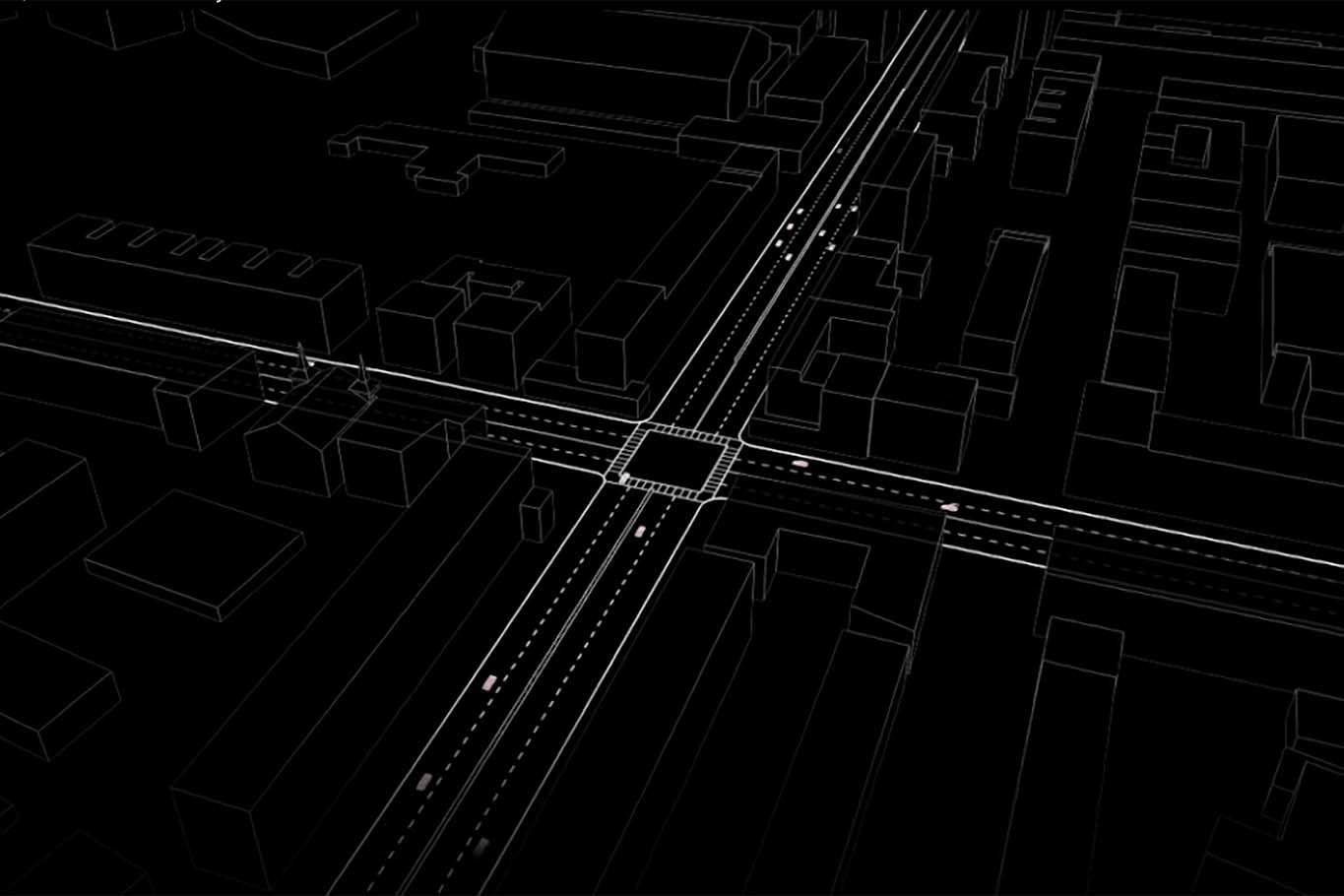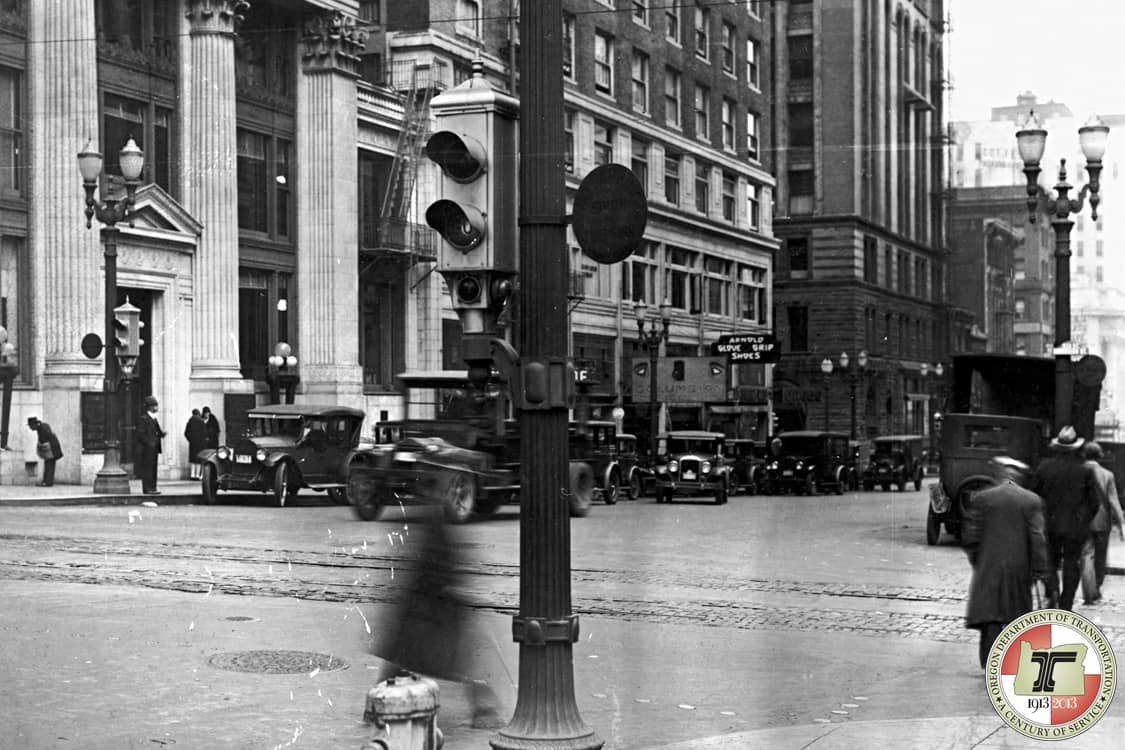Archives
Smart intersections won’t help cities without smart policy
The first thing that should pop into mind with the future of mobility is people, not cars.
By Eric Jaffe

There's a lot you won't see in this fun video of an autonomous vehicle "smart intersection" from MIT's Senseable City Lab making news rounds. You won't see long lines of cars forming at traffic lights. You won't see traffic lights at all. The slot-based intersection uses sensor data from oncoming vehicles to coordinate their safe-but-nonstop movements. You won't see congestion delay, because it no longer exists.
What you also won't see are pedestrians. This omission occurs despite the fact that the smart intersection was derived from Massachusetts and Columbus avenues in Boston, a crossing typically filled with plenty of people in the city's South End. The official video description insists the intersection "is flexible and can be designed to accommodate pedestrian and bicycle crossing with vehicular traffic." But just how that's the case is one more thing that's hard to see.
That's not to jab at the fine folks at Senseable City. As I've pointed out, other smart intersection models have also left out people. These exercises come with the best of intentions: help reduce the congestion that makes daily travel so frustrating for metro area residents. But their mistake is suggesting that technology alone can solve urban problems. On the contrary, smart intersections without smart, people-first policies will only make things worse.
City history offers a perfect parallel. Long before the dream of autonomous intersections, Chicago implemented a technology back in 1926 that also promised to end traffic: signal optimization. This engineering innovation, as well as its unintended social impact, is chronicled by Peter Norton of the University of Virginia's Center for Transportation Studies in his masterful 2011 book, Fighting Traffic.
Before that time, traffic lights along a corridor all changed at once, sometimes at the manual control of a police officer. This approach brought great order to roads but also created lots of congestion. So an emerging crowd of traffic engineers took charge of the problem, studying traffic volumes on each block and timing the signals for optimal flow --- with "optimal" defined as whatever created the least amount of vehicular delay.

Traffic light optimization in the late 1920s made it harder for pedestrians to cross city streets; Oregon’s first electric traffic signal is shown here in 1928.
Oregon DOT / Flickr